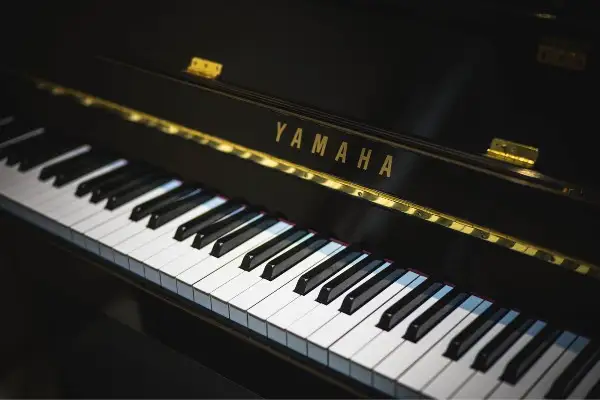Triads are one of the first concepts you'll come across in music theory. These chords are the building blocks of most songs today, making them important to understand as an artist.
Fortunately, we've put together a 101 guide on all things triad - In this guide, we'll decode the major triad, minor triad, augmented triad, and diminished triad so that you can start using these chords in your music. We'll also explain how different triads work and share how to build any triad using the key signature of a piece. Let's take a look!
What are Triads?

You may notice that the word "triad" has the prefix "tri" meaning three. This is no accident - the term triad refers to a group of three notes. In most cases, the term "triad" refers to a group of three notes put together in the context of a chord.
A D major chord (D F# A) can also be called a D major triad. A C minor triad (C Eb G) is also a C minor chord. Just like any other group of notes, triads have a harmonic function and chord quality based on the key signature and context of a particular piece. Triad qualities vary based on the type of triad, and how they are used within the context of a particular piece.
How Do You Build a Triad?

To build a triad, first you need to identify what type of chord you're looking for. Major and minor triads are built from the corresponding major and minor scales, so start there.
Generally, you can assume major chords have a "happier" sound, while minor chords tend to sound more sad or complex, since they produce more dissonance. The key is often determined by the "middle note" or third note or scale degree as discussed below.
A triad consists of three specific notes. Whenever you build any chord, you'll be working with the root note, major third or minor third, and fifth scale degrees. Let's say we are trying to build a C major triad, for example:
First, we'll look at the C major scale: C D E F G A B
Next, we'll take the first, third, and fifth scale degrees to create C E G.
Volia! We have built a C major triad!
The process of creating any triad follows this simple process - choose a starting note and scale, identify the scale degrees, and complete the chord.
The Different Types of Triads
Now that we know how to build triads from the ground up, let's take a look at some of the most common triads you'll come across in music:
Major Triads
A major triad is built from the root note (first scale degree), third scale degree, and fifth scale degree of any major scale.

Minor Triads
A minor triad is built from the root note, third scale degree, and fifth scale degree of any minor scale.
Diminished Triads
A diminished triad builds off of a minor chord structure, but with a flattened fifth. So, if we take an A minor triad (A C E), we can turn it into an A diminished triad as A C Eb. Diminished chords often serve as a brief bridge between two chords.
Augmented Triads
An augmented triad builds off of a major chord structure, but with a sharpened fifth. If we take a C major chord (C E G), we can sharpen the fifth to produce a C augmented triad with C E G#. Augmented chords are used as substitutes for dominant seventh chords, or as a base of a descending line, typical in jazz standards.
Remember that chords and triads don't necessarily have to be written in root position. We might write a C major triad as C E G, but it can also be written as E G C or G C E. These are referred to as chord or triad inversions. They are still the same chord based on the context of the triad, but the quality may differ based on the context based on the dissonance between the preceding or following notes.
Beyond Triads: Seventh and Ninth Chords
Note that triads are just one type of chord. You can also find chords that have more than three notes, as it is in the case of the seventh and ninth chords. These chords take a triad base and add the seventh or ninth scale degrees creating a four, or even five note chord. These complex chords are commonly seen in genres like jazz.
Triad FAQs
Understanding the ins and outs of these note chords can take some time! Scan these commonly asked questions and answers to help you expand your understanding of triads and chords:
What is a triad example?
Any three note chord is an example of a triad. A C major chord, A minor chord, a D diminished chord, and E augmented chord are all examples of triads.
What are triads in music?
Triads built Eastern and Western music as we know it. In most cases, a triad simply refers to a chord with three notes.
What are the 3 major triads?
The most common types of triads you'll come across are major triads, minor triads, and diminished triads. These triads are named after the chord quality and scales they're built from.
And there you have it! You probably already understood the concept of triads intuitively, but now you can put a name to the term. Have fun applying your music theory knowledge to your next composition.





